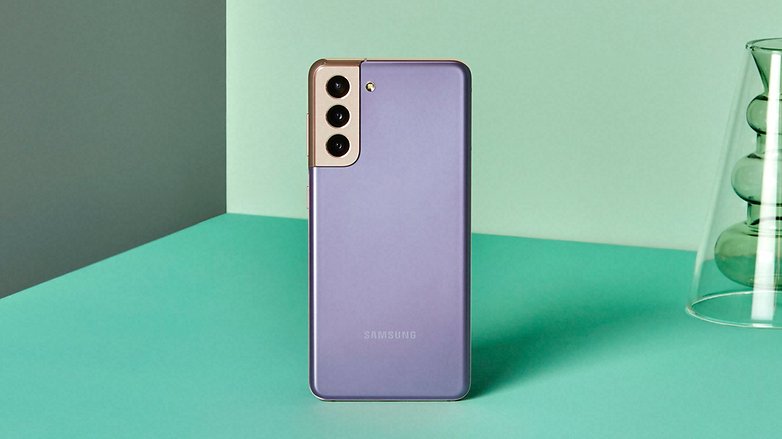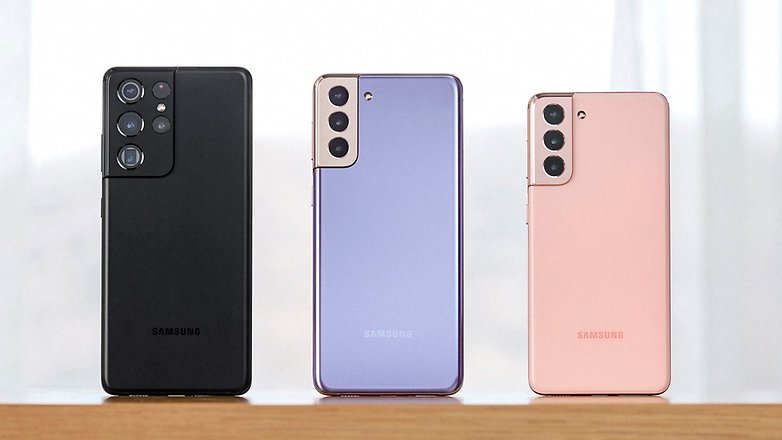Did Samsung finally get tired of hearing me whining non-stop and throwing all of my toys out of the pram like a temperamental kid? No, I didn't think so, and that is probably the case just as well. As a consolation, at least one of my complaints that I ranted about in this article before the release of Galaxy S21, has been answered.
The Samsung Galaxy S21, S21+ and S21 Ultra are indeed cheaper than the Samsung Galaxy S20 5G (€1,009), S20+ 5G (€1,109) and S20 Ultra 5G (€1,359) when they were first released. This is even more impressive considering this year's Galaxy S21s are all 5G compatible by default, whereas Samsung slapped a €100 premium on the 5G versions of its flagship models back then.
There is one particularly interesting thing to take note of: the price drop on the base model, the Galaxy S21, which is Samsung's entry-level top-of-the-range model, led me to hope for a change in the manufacturer's strategy on the flagship market.
Focus on the base model
Even before the Galaxy Unpacked conference happened on Thursday, January 14th, the dependable South Korean tech media ET News reported on January 7th that Samsung would concentrate most of its production capacity on the basic Galaxy S21. Samsung, reportedly, hoped that the Galaxy S21 will be its best-selling model and that it will allocate 60% of its production capacity to its cheapest flagship. Samsung would also lower the price of this model to 990,000 won (about €745), which is lower than the Galaxy S20 which cost 1.248 million won (approximately €938).
For once, this is a prediction that has come true even in Europe, and which may leave one wondering: why has Samsung agreed to this price drop? Has the manufacturer finally realized that offering increasingly expensive smartphones is not a strategy that is appreciated by all consumers? Or perhaps the South Korean giant wanted to share its wonderful technological innovations and know-how with as many people as possible, done in a spirit of benevolence and unconditional generosity?

Ah, I always knew I had a future in stand-up comedy if tech journalism didn't work for me. But more seriously, Samsung is launching its Galaxy S21 at just the right time. It's the first 5G flagship of the year and with the (temporary?) void left by Huawei, Samsung knows it has all the cards in hand to set the pace in the high-end smartphone market.
Which is more than welcome after considering how Apple has hit hard with its iPhone 12 range which, no matter what their critics say about it, have had the merit of not seeing a price increase despite the switch to 5G compared to the previous generation. A jump in price that almost all Android manufacturers had to acquiescence to last year, however, due to Qualcomm forcing the hand of smartphone manufacturers with their new Snapdragon 865 chipset.
Perhaps the success of the Samsung Galaxy S20 FE, the most affordable semi-flagship or flagship lite it's been able to market so far, has given the manufacturer some ideas, so consumers are now looking for high-performance smartphones with a good price/performance ratio? But that's crazy!
More than a strategic choice, there was a real need to readjust prices
However, Samsung did not reinvent the wheel. The self-evident fact is this: for each flagship range, the entry model is the one that sells the most. It makes perfect sense as it is the cheapest available model.
But the fact that the Samsung Galaxy S21 and S21+ are almost identical, even more so than the S20 and S20+ were at the time, is quite surprising. I'll let you check the comparison chart that my colleague Ben came up with to make sure (via the link at the beginning of this article), but apart from the material used at the back (plastic for the S21, glass for the S21+), the dimensions of the smartphones, the screen size, and the battery, nothing else distinguishes between these two models.

So you might conclude that Samsung is reserving the S Pen for the Ultra model, hence contradicting my brilliant theory. But honestly speaking, does a plastic stylus, which doesn't connect via Bluetooth, the lack of any expandable storage options in the smartphone, and is deprived of buttons and gesture functions, really constitute a "killer-feature" whose exclusivity will push Samsung fans to opt for the Galaxy S21 Ultra?
Well it's true, the Samsung Galaxy S21 keeps other more interesting exclusives such as the WQHD+ definition for its screen, a 108 MP main sensor (compared to 12 MP for the other two models), dynamic refresh rate, an additional telephoto lens and its 100x zoom (30x on the other models), among others.
In reality, this doesn't in any way call into question my argument. In fact, there is a clear breakthrough in the Galaxy S21 lineup. On the one hand, the S21 and S21+ are now more affordable, while on the other hand the S21 Ultra, still retains its premium and elitist position (despite the fact that it is still cheaper than the S20 Ultra after taking into consideration all of the improvements).
This split is all the more noticeable when you consider that Samsung abandoned the curved displays on the S21 and S21+ while dropping the amount of RAM available from 12 GB to 8 GB. Rather than boosting all of its flagships and offering bloated specifications via its high-end catalogue, Samsung has preferred to play the balance card this year, and I think that they did it well. After all, 8 GB of RAM is still more than adequate for even the most hardcore Android power user.
Concretely, customers who have the means and who swear on settling on nothing less than having the best of the best, Samsung can always rely on its Galaxy S21 Ultra to shift some units. It can be considered as the last of the flagships, so to speak. And for the rest, us ordinary Joes, we form the consumer base that brings in the most cash for Samsung and we are the ones whom the manufacturer has to seduce far more than its few loaded followers, making the Galaxy S21 and S21+ as the logically more accessible gateway to the high-end catalogue.
If I really wanted to provoke you, I'd say it's a strategy very similar to Apple's approach with its iPhone 12 Mini. But as with Apple, the question then arises as to whether the compromises made were necessary to offer lower prices without having to sacrifice the "premium user experience" that one would expect from a flagship device.
In my opinion, this is not the case. Over the years, Samsung had set the bar so high, for better or worse, with its Galaxy S20 range last year. The slightest compromises made with the Galaxy S21 this year runs the risk of being seen as a hardly forgivable downgrade. But that is a tough question for reviewers and users to answer, and personally, I salute this risky choice by Samsung.
How do you feel about it? Do you have a positive view of the Samsung Galaxy S21's price reduction? Do you think this is a conscious choice on Samsung's part to make its flagship products more accessible? On paper, does the basic Samsung Galaxy S21 seem competitive compared to the Ultra model? Is it a "worthy" flagship in your opinion? Let me know in the comments!
Read More Open link https://ift.tt/3qjPlRp

0 Response to "Samsung Galaxy S21 price drop: a risk worth taking?"
Posting Komentar